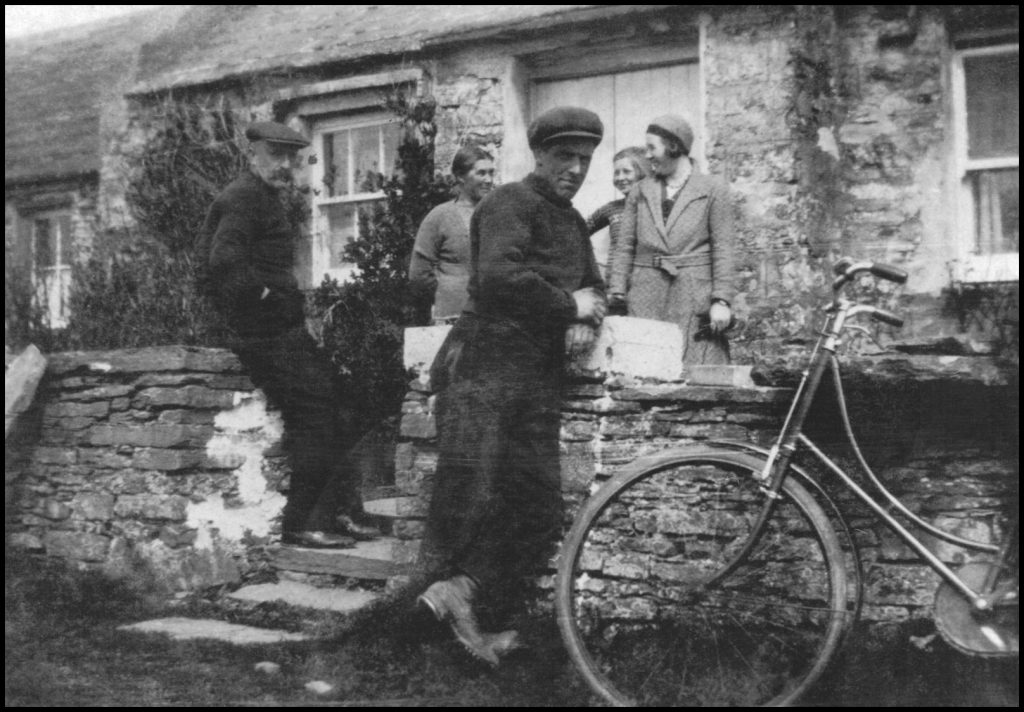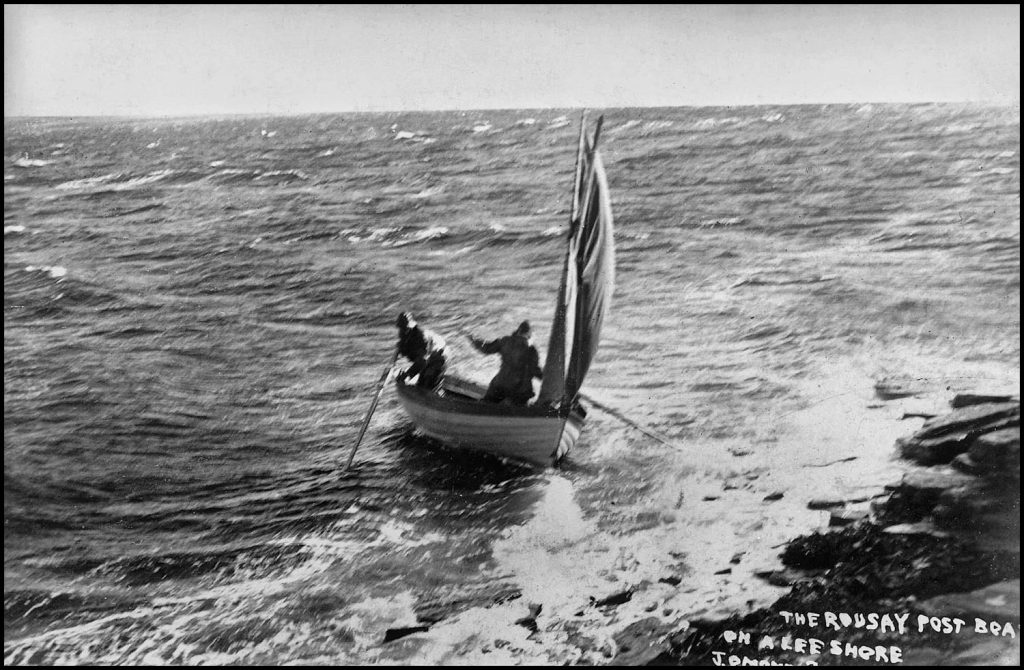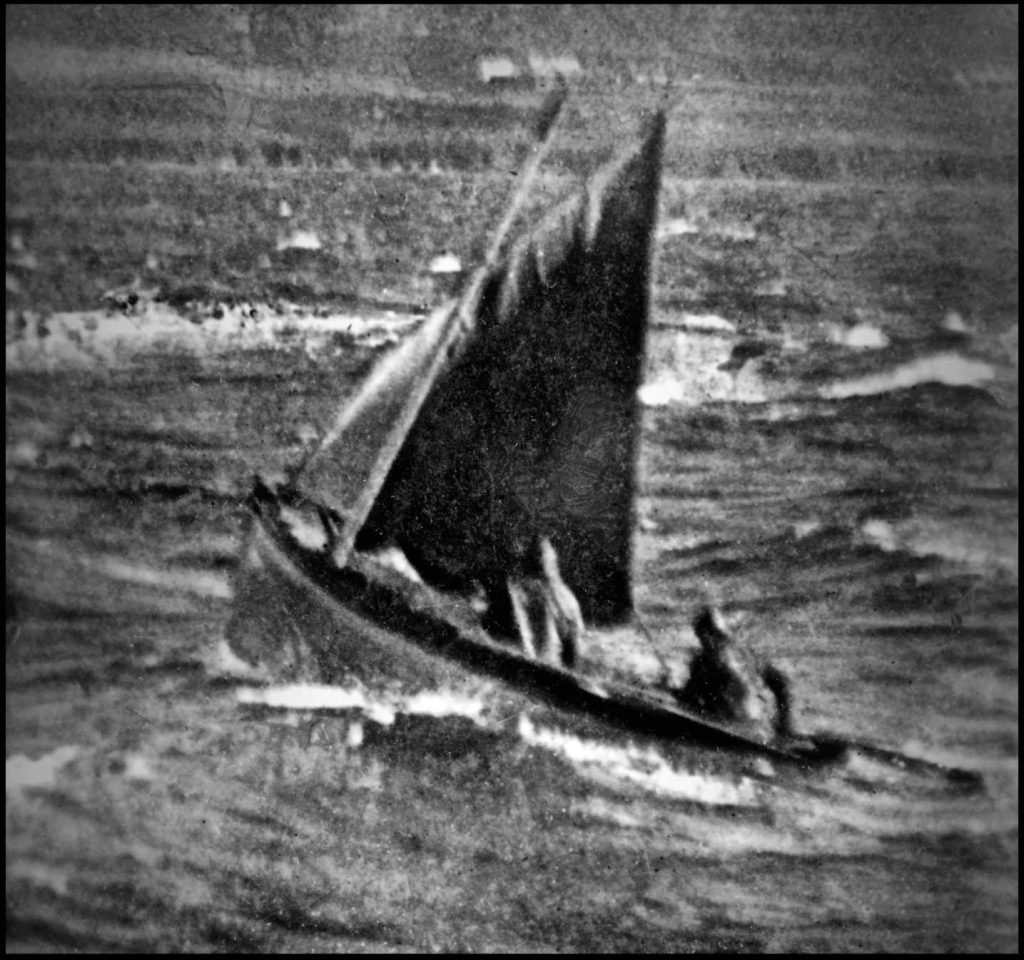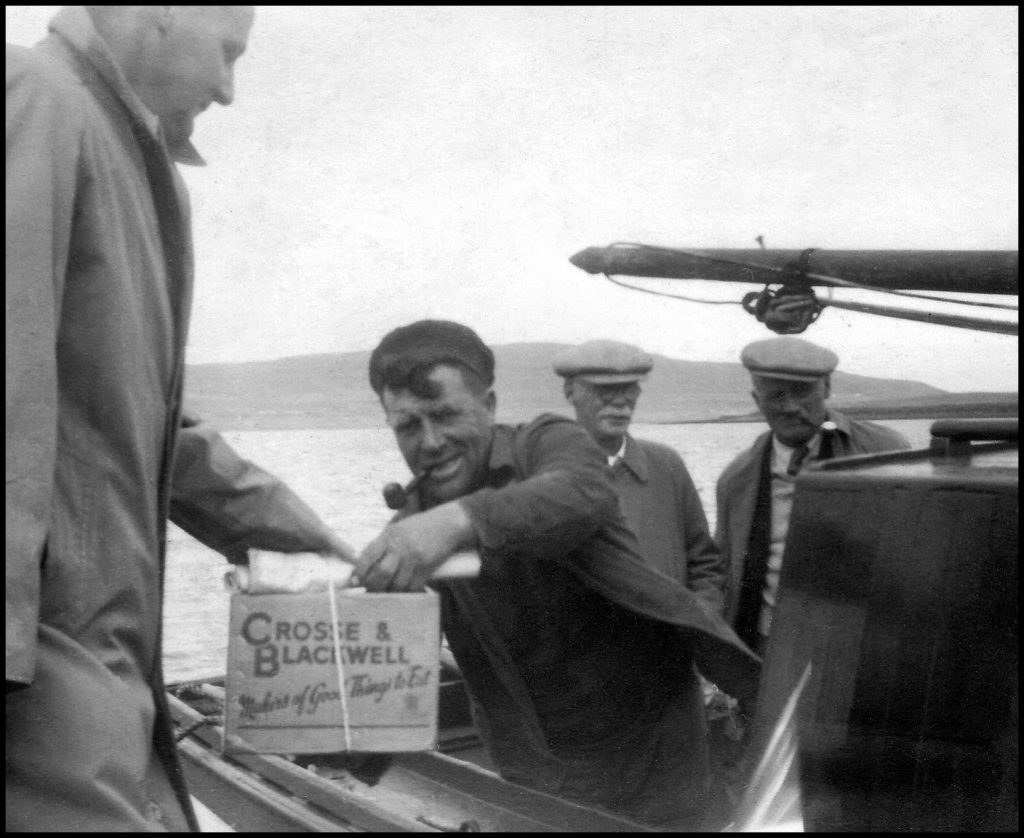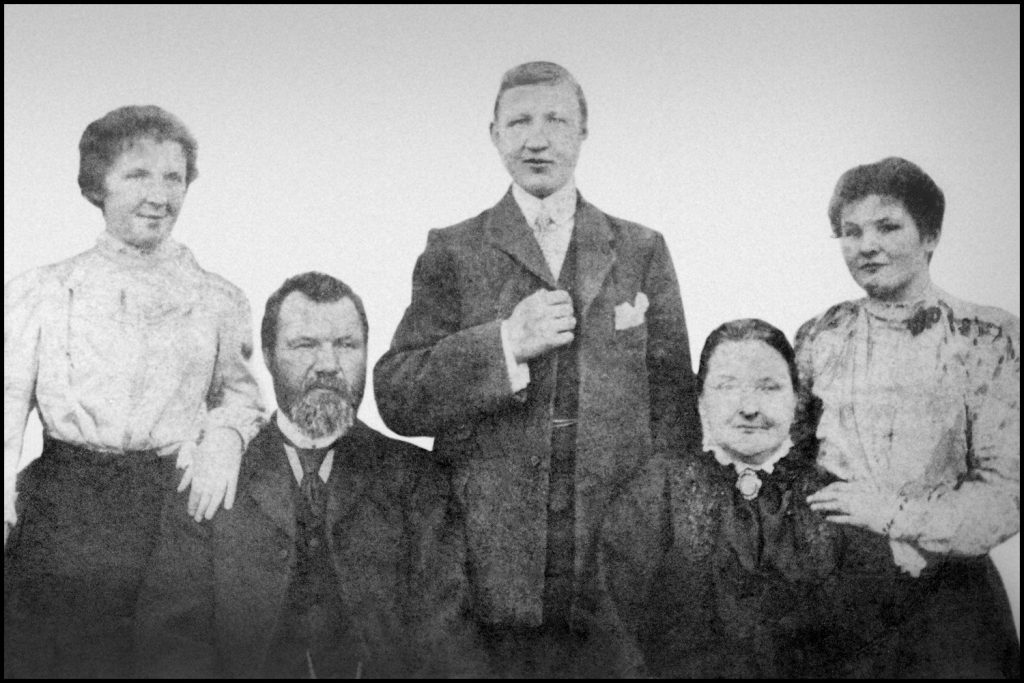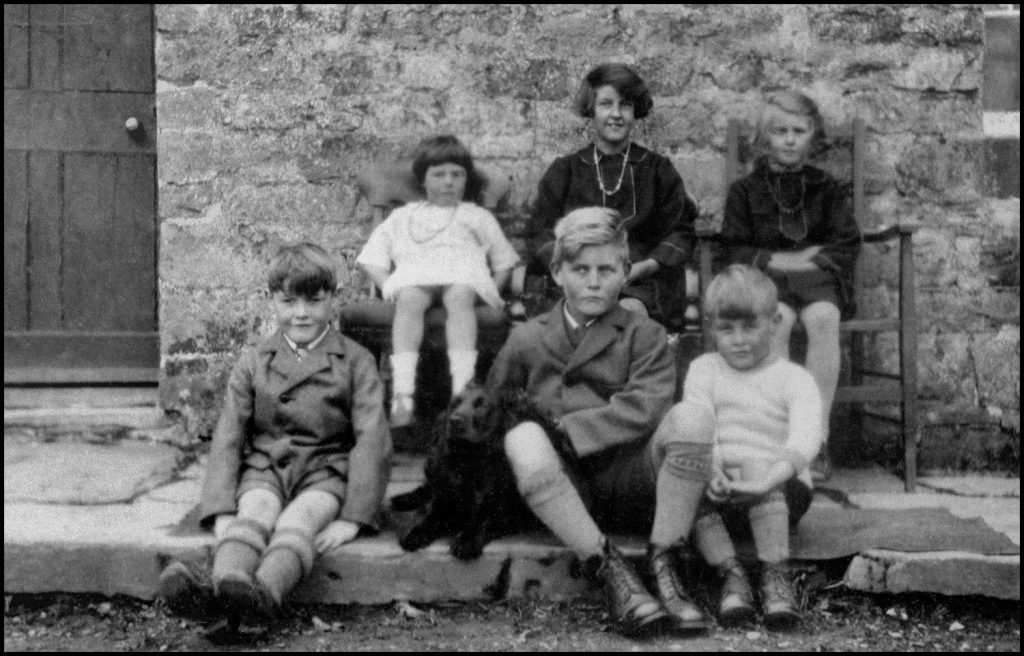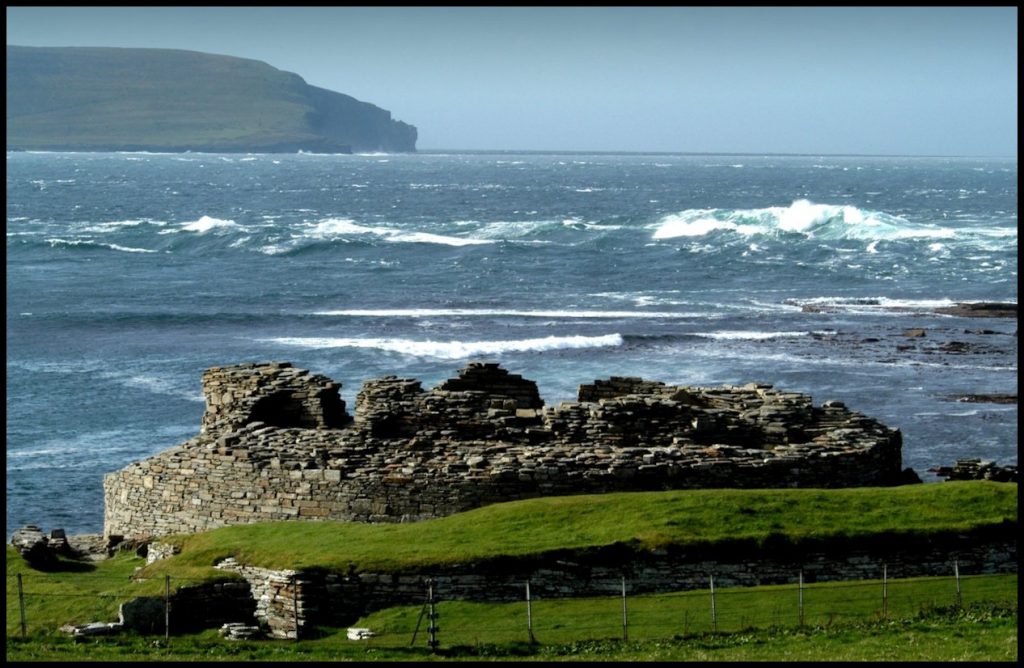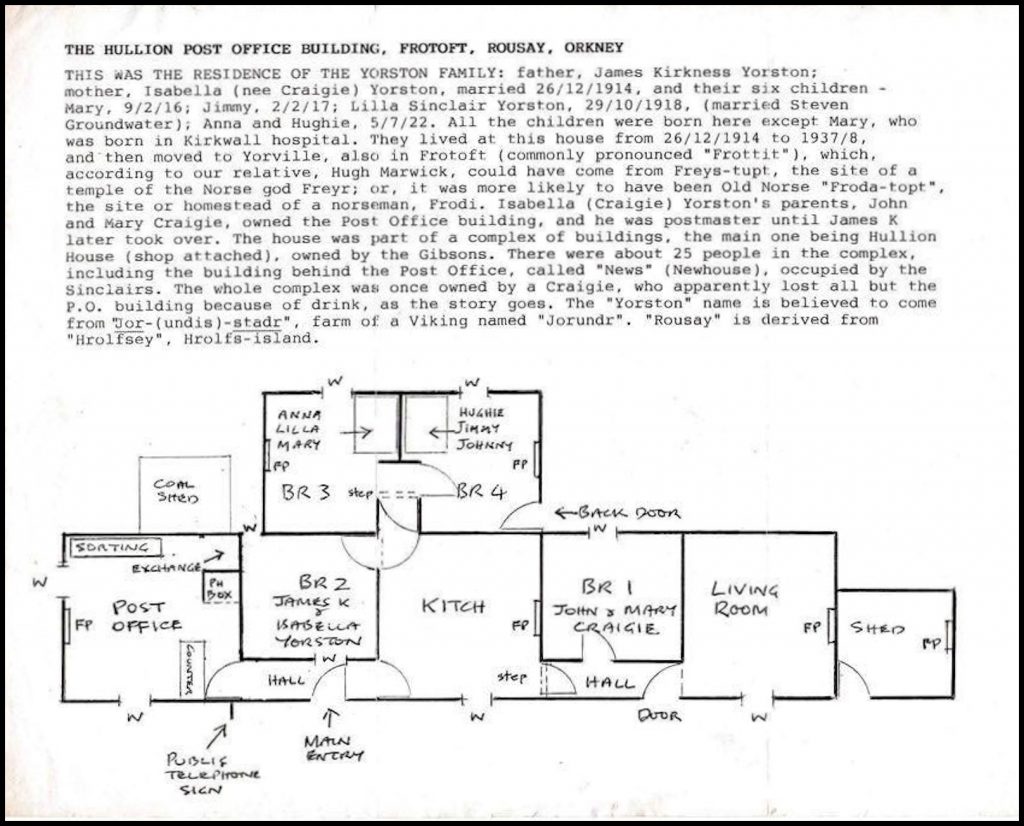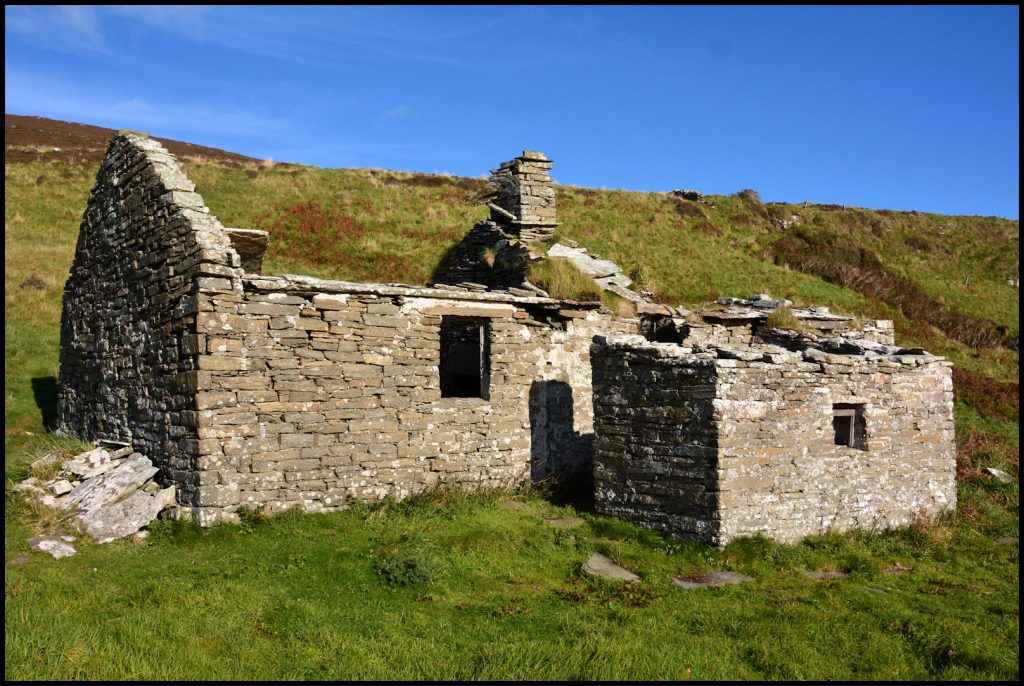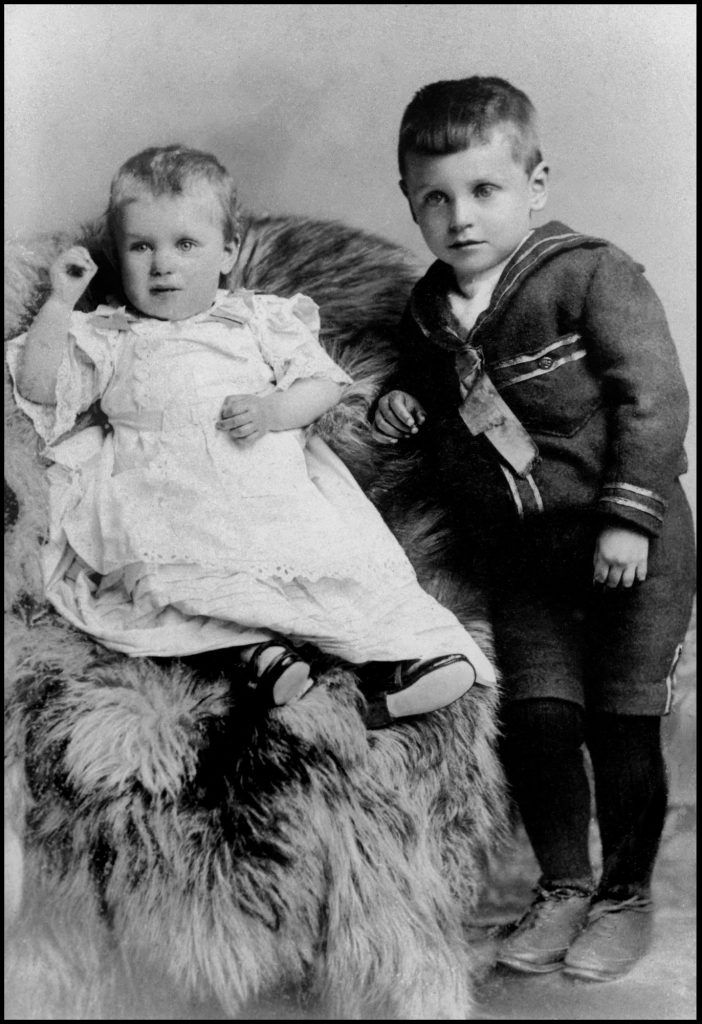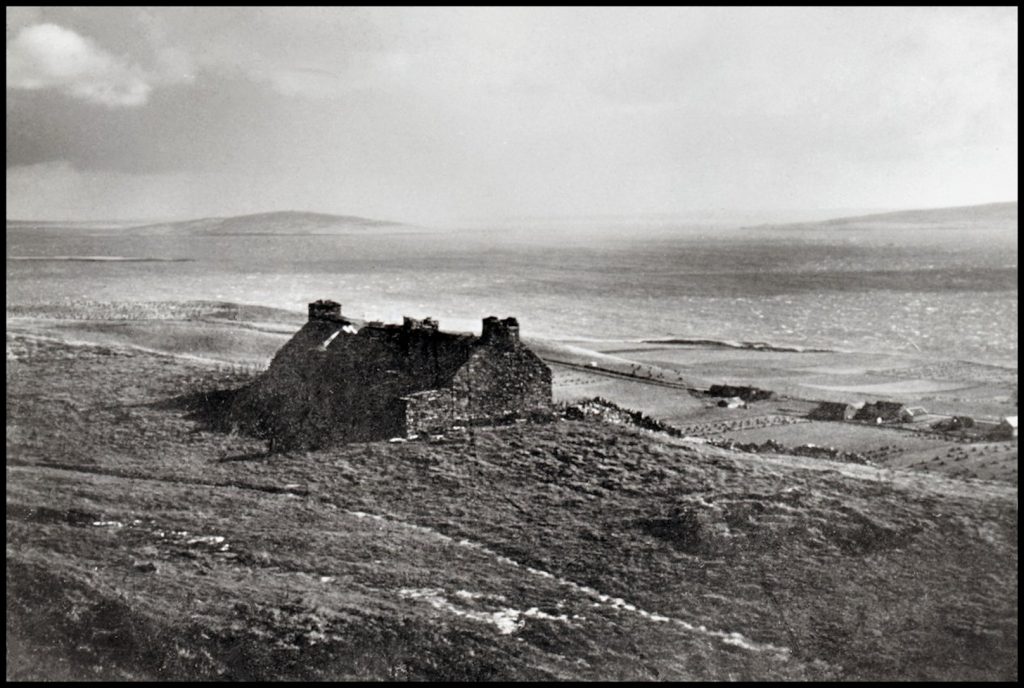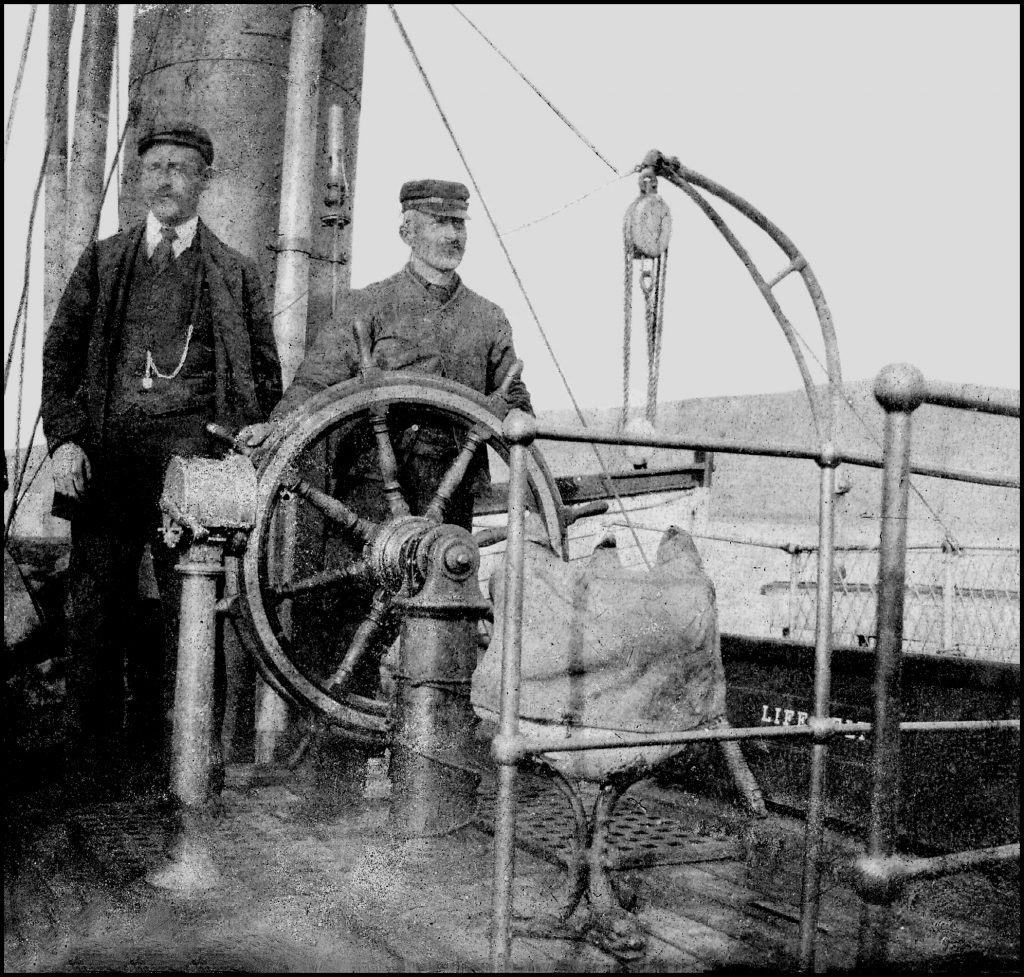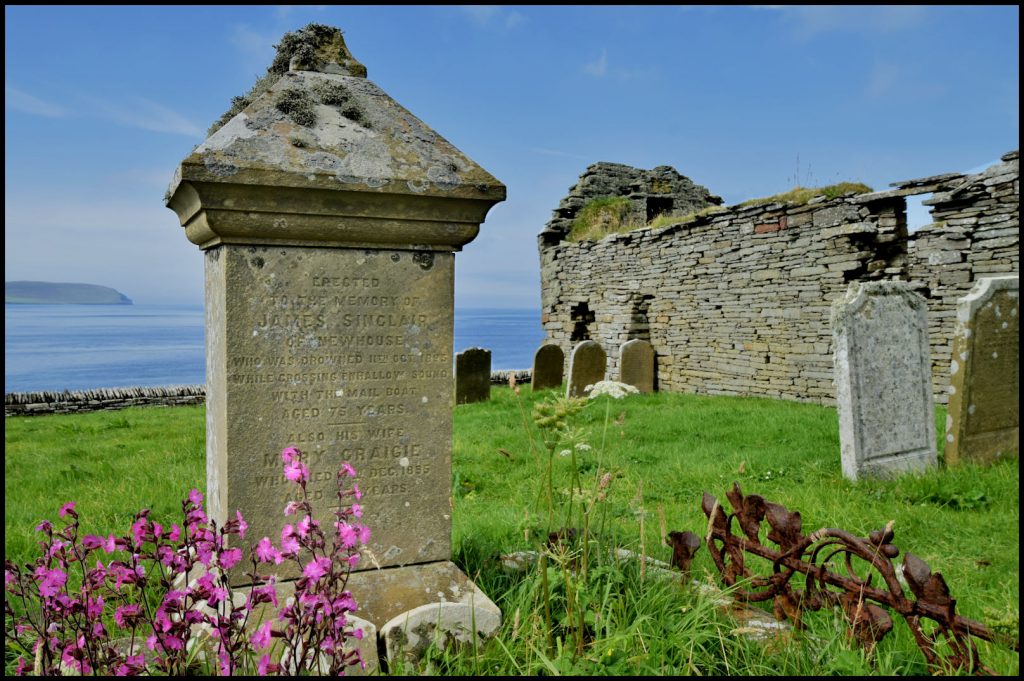Many years ago Hullion was a little township in itself, comprising a merchants house and farm, shop, post office, bakery, mill, and drapers. According to the earliest Rental available Hullion was occupied by Magnus Chelling in 1607, and in 1627 by Magnus Irwing, though these could have been the same person. In 1739 William Craigie was the tenant and from that time onwards a succession of members of the Craigie family, all merchants and grocers, lived and worked at Hullion.
It was here in the mid-1800’s that clothier and grocery merchant John Craigie carried on his business. John was the son of Mitchell Craigie and Ann Mainland and they lived at Holland [the ivy-covered building in front of the Hullion of today – which, I’m lead to believe, housed the ‘murderer Kirkpatrick’ – about whom, unfortunately, further information is lacking!]. John Craigie was born on March 18th 1795. In 1819 he married Margaret Inkster, daughter of John Inkster and Barbara Marwick of Saviskaill, who was born in 1794. Between 1820 and 1838 they raised a family of nine children, six girls and three boys: Mary was born on May 10th 1820; Margaret on April 12th 1822; Janet, on May 10th 1824; John, also born on May 10th, but died two years later in 1826; Ann, born on June 10th 1828; Hugh, on November 4th 1830; Janet, on January 4th 1833; Robert, on June 11th 1835; and finally Isabella, who was born on July 11th 1838.
This is a report from the John o’ Groat Journal, dated February 24th 1843
SHOPBREAKING AND THEFT. – On Tuesday week last, Mr Craigie, merchant, Rousay, had his shop feloniously entered by means of removing a pane or panes of glass, when a quantity of goods, together with a sum of money, was abstracted. Today (13th inst) the Sheriff-Substitute, Procurator Fiscal, Sheriff-Clerk Depute, and a party of officers are starting for that island to investigate the matter.
Unfortunately, subsequent editions of the newspaper failed to report any further proceedings.
In the 1861 census John Craigie, ‘The Auld Laird,’ then 65 years of age, was described as a landed proprietor. His wife Margaret had died in 1855, at the age of 61. Second oldest daughter Margaret had married Hugh Marwick of Feolquoy in 1847, but now widowed she worked at Hullion as a milliner.
John Craigie junior, born on May 10th 1826, was head of the household in 1871, and he was postmaster at Hullion. In 1851 he married 25-year-old Sarah Sinclair, daughter of John Sinclair and Magdalene Craigie of Tratland, and they had seven children between 1853 and 1867. First-born was John Inksetter, born on July 1st 1853; Anne Marwick was born on March 27th 1855; twins James Mainland and Margaret Marwick were born on July 19th 1858; Sarah was born on September 29th 1861; Hugh, on November 6th 1863; and Robert, who was born on June 29th 1867. John I. Craigie married Mary Sinclair of Stennisgorn; Anne married John Logie of Rose Cottage; James M. married Margaret Mainland of Bu, Wyre; his twin sister died in infancy; Sarah married Hugh Sinclair of Stennisgorn, later Bellona; Hugh emigrated to America where he died at the age of 26; and his younger brother Robert also went to the States, but remained unmarried.
Another newspaper article, this time from the Orkney Herald, dated August 18th 1861
CAPTURE OF WHALES. – “From the late unfrequency of the visits of the bottle-nosed wanderers from the polar regions, it might perhaps have been inferred that they had bottled up the recollection of the sad fate of such of their race as had previously visited our shores, and had finally ‘turned tail’ upon us, if they had not indeed resolved to abide henceforth within the comparatively safe precincts of their own icy homes. Not so, however, for on the morning of Wednesday last the inhabitants of Sourin, in the Island of Rousay, observed another large arrival moving about the anchorage of Holm [Bay of Ham], and not more than 300 yards from shore. Crowds of men, women, and children were forthwith collected, while several boats put off to intercept the retreat of the whales seaward. The huge animals allowed themselves to be quietly driven towards the shore by the men in the boats, and in a short time they were stranded, the boats still keeping close together to prevent their escape. Immediately the men, with sharp instruments, rushed on them, and in a short space the whole of them, to the number of nearly sixty, were captured. Some of the fish measured about eighteen feet long by sixteen feet in circumference. On Friday the whole were sold, and realised the sum of nearly £240, the principal purchasers being Mr. Craigie, Hullion, Rousay, and Mr. Malcolm Green, Kirkwall, in company with some others. In the comparative failure of the herring fishing, we congratulate our Rousay friends on this ‘windfall’ – we should rather say ocean gift.”
Known as ‘The Young Laird,’ John died in 1881.Though his son John carried on at Hullion as postmaster he was later declared bankrupt and by 1891 the farm and grocery business had been taken over by David Gibson. He was the son of George Gibson and Ann Mainland and they lived at Langskaill.
David, born on April 29th 1844, was the youngest of their children. In August 1868 he married Ann Sinclair of Newhouse, Frotoft in 1868, It was Ann’s father James Sinclair who bought the Hullion business for his daughter and son-in-law when John Craigie was declared bankrupt. David and Anne had nine children: Mary, born in June 1869 and later married Major William Spence of Evie; Alice, born in July 1871, who married Charles Logie, a joiner at Rousay pier; James, born in 1872 and married Mary Cooper; George, who emigrated to America; John, born in 1877, married Margaret Craigie of Turbitail; Maggie Jessie, who married William Miller of Hestival, Evie; Hugh, who went to Canada; Annie, born in 1883, who married John Leonard of Cruannie; and Rose Ida, born in 1883 and married Alexander Craigie of Hunclet.
David and Anne’s oldest son, James Sinclair Gibson, was born on September 10th 1872. He eventually took over the business at Hullion and his horse-drawn van travelled to Sourin and Wasbister on separate days once a week. James married Mary Cooper in 1902 and they had seven children. Marjorie; James; Ann; Kathleen; William; John; and David.
Billo Gibson with the van and two horses, needed when tackling the hilly route to and from Wasbister – Billo and young Jock Yorston harnessing horse to van outside the shop at Hullion
Mary died in 1932 at the age of 52, and husband James died in 1948 by which time he was 76 years of age. Their youngest son David, born in 1925, married Edith Gibson, daughter of John Gibson and Cissie Harrold of Avalsay, and Hullion was passed on to the next generation of Gibsons in 1947. Dave and Edith took the bakehouse over in 1952 when Brown the Baker moved to Australia and Heddle Omand became the baker. The horse-drawn van was eventually replaced by a motorised van, and petrol pumps were installed at Hullion in 1972, and fresh meat came across from John T Flett in Kirkwall. When Dave and Edith took over Hullion, all of their supplies came across with Tom Sinclair on the post boat, and when Mansie Flaws started the boat service at Tingwall, the supplies came across with him. The shop and bakehouse eventually closed due to the fact the population of Rousay had dropped to a quarter of what it had been before, meaning trading was no longer viable. Dave retired in 1988 – from a business that had been in operation for at least 150 years, under the ownership of the Craigie and Gibson families.
Grateful thanks to Edith and daughter Julia for their help with names and dates.
All black and white photos are from Tommy Gibson’s collection, except the two above.
The one of Edith is mine; the other hangs on the wall at Burrian, where Edith lives now.

















